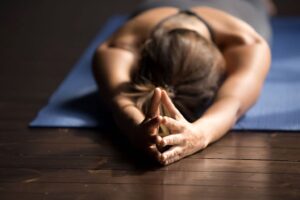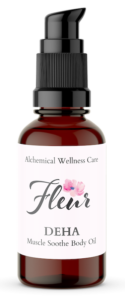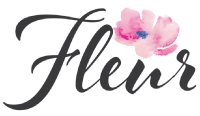Happiest and Healthiest New Year!
“If you make a commitment larger than your own life, that commitment will come back and shape you into who you need to be to fulfill it.” —Lynne Twist
2023! May it be a year of miracles…
Now that we have made it through the holidays and look forward to possibilities this year, it’s always a good time to refocus on the healthy habits that support your goals. Pursuing your heart’s desires and small and big dreams requires an infusion of love, energy, and purpose.
As I misted Inspiration Spray for writing down some of my yearly goals, I contemplated the habits and rituals that make my heart sing. In this receptive state, I mindfully returned to my source, my own inner light, and I heard the whisperings of my soul directing me back to my mat.
Yoga Restart
Since the yoga studio I attended closed two years due to covid, I have missed the fellowship of my practice with other yogis. I joyfully looked forward to the consistency of the vinyasa practice starting at 5:30 am that challenged and energized me before I started my work day.
The benefits of my yoga practice kept me strong, my core stable, my spine supple, and my joints flexible.
 But, these past couple of years of exercising at home, I noticed that I was increasingly becoming lackadaisical – choosing to sit and work at my computer instead. Consequently, my posture started changing, and not for the better.
But, these past couple of years of exercising at home, I noticed that I was increasingly becoming lackadaisical – choosing to sit and work at my computer instead. Consequently, my posture started changing, and not for the better.
Connecting to my Foundation
This week, I returned to early morning yoga at a studio new to me nearby. The joy and happiness I feel with this one decision, one action to love my body, mind, and spirit in the company of breath, heat, movement, and community, resonates through the whole of me.
Returning to my mat helps me reconnect with my essential self and recharges my spiritual battery through the pairing of breath and movement.
Connecting to my foundation opens me up to the humbling experience of awareness. Even as I welcomed my body back to the mat with kindness, I also had the momentary thought, “what am I doing to myself!”
My intention encourages me to practice a “beginner’s mind.” Simple poses that came easily to me previously were far more challenging even as my mind challenged me. I became aware of my own body-mind resistance!
However, staying inside the asana (pose) and the breath to move past the resistance until I felt shifts opened me to a greater embodiment. Witnessing and observing my own resistance offered me an awareness of the power and freedom of my intention and surrender to the moment.
Cultivating a focus on what I can do instead of what I can’t do yet, helps me become stronger, more flexible, and more integrated over time – through practice.
The Organ of Form
Fascia can be seen as the architectural framework of physical shape. This incredible connective tissue casing surrounds and holds every organ, blood vessel, bone, nerve fiber, and muscle in place. It holds us together in this 100% interconnected network of sensory communication.
In Latin, “fascia” translates to “band,” suggesting fascia quite literally bands us together. Its spider web-like substance is the framework of our form. It’s a structure that organizes us into a shape that functions and moves through life.
Fascia is now thought to be our richest sense organ. It is believed to be able to contract independently of the muscles it surrounds. It is also now considered to respond to stress without our conscious command. This means that fascia impacts our movements, for better or worse.
When we think about and work with fascia, it can be good to cultivate an idea of ‘wholeness’ and ‘connection” to appreciate its unique and often unrecognized importance, responsible for our body’s shape and mainly locking us into permanent posture patterns. Instead of focusing on the separateness of our parts, fascia allows us to appreciate the reality of our connectedness instead.
Our fascia is affected by our daily habits, thoughts, and emotions. Our nervous system works in tandem with our musculoskeletal and fascial systems to shape and form our posture and body.
We have a type of fascia found just below the skin (superficial fascia), and beneath this, we have deep fascia – a tougher, tighter form. Embedded in this are our muscles, blood vessels, etc. A third kind of fascia lines and forms our body cavities.
Our muscles move us around with ease and grace when we are strong and flexible. Healthy fascia is elastic, pliable, bendable, fluid, flexible, and springy, helping us feel lighter and softer.
Fascia Problems
But when our fascia becomes unhealthy, it binds and strangulates our muscles, causing us to feel weak and stiff and ultimately causing us pain with movement. Sticky fascia affects the energy transfer process from one muscle to the other, impacting the body’s coordination. When it is dehydrated, the fascia becomes cemented, stiff, tough, matted, gummy, tough, dry, brittle, and hard, causing the body to feel stiff and unbendable.
Over time, our muscles accumulate too much dense fascia from repetitive movements or a lack of diversity of movement. The muscles stop doing their job to move our bodies around, so our joints overwork to allow our bodies to move. Eventually, wear and tear in the joint shows up, and consequently, pain and injury.
Stiff and Sore!
 It’s true: Yoga can make you sore because yoga stretches the body in unfamiliar ways, engages muscles, and pulls on the fascia that isn’t accessed daily.
It’s true: Yoga can make you sore because yoga stretches the body in unfamiliar ways, engages muscles, and pulls on the fascia that isn’t accessed daily.
Of course, since it had been a while since I engaged myself on my mat in deep stretches and postural alignment, my body became so sore within hours of the initiatory yoga class that I could barely move.
And although I was expecting to feel muscle soreness, I was surprised to experience the degree of discomfort and soreness after my first yoga class. Whatever pain I became aware of returning to my mat, far more pain is “stored” in the inert tissues.
The soreness I experienced afterward is called delayed onset muscle soreness (DOMS), which usually occurs just hours after exercising. I also was deeply exhausted from the tension released from activating my core and stretching my muscles and fascia beyond my common sphere of movement.
Although delayed muscle soreness will generally go away on its own, I used several flower essence aromatherapy strategies to cope with soreness and speed recovery after my first yoga session.
Fleur Recovery Tools
Experiencing some soreness after yoga is perfectly normal and can even be beneficial, but that doesn’t mean I had to suffer through it. Thankfully, using my Fleur alchemical wellness tools to comfort and relieve my aching body assisted my recovery. 
- I soaked in a hot bath with Sea of Life 50/50 Salt Blend with magnesium to relax my muscles and release the tension.
- After my bath, I massaged Deha Muscle Soothe onto my arms, neck, shoulders, and along the spine and ribcage for the analgesic and anti-inflammatory properties that are healing to muscles and bones.
- I massaged CelluCleanse Oil into the long muscles of my thighs and upper arms to allow more healing blood to flow to my fascia and help them flush out the accumulated toxins and lactic acid.
- Later, before bed, I massaged Magnesium Lotion into the same areas so my body would continue with the repair cycle while I slept.
- At bedtime, I misted Release Spray onto my bedsheets to break the undesirable energy pattern to facilitate further release.
When I awoke the following day, I gratefully was much less sore and had more range of movement and less stiffness. I continued this protocol in the days following as my body eased and became more integrated.
The Struggles that Shape Us
I genuinely believe that our struggles shape us into who we are and teach us the most powerful life lessons. We uncover what matters most to us, learn more about ourselves, discover how to respond to challenges, and determine what we’re truly made of.
By listening to my body-mind, I honor the struggle as it reshapes me. I don’t overdo my practice. I trust it to guide me to wiser choices on and off the mat. Still, my whole self makes better decisions – on a physiological level and, consequently, on an emotional and developmental level too.
As the Stoic philosopher Marcus Aurelius once wrote,
“The impediment to action advances action. What stands in the way becomes the way.”
As a result, there is freedom of judgment and joy in moving and stretching in ways my body desperately needs but hasn’t gotten these past years.
Intentional Self-Care
 My yoga restart is intentional. Self-care is the active process of learning to identify self-sabotaging patterns that weigh us down and then letting them go because once we let go of what’s no longer positively serves us, we will allow room for what will.
My yoga restart is intentional. Self-care is the active process of learning to identify self-sabotaging patterns that weigh us down and then letting them go because once we let go of what’s no longer positively serves us, we will allow room for what will.
For me, yoga is less about appearance and more about the feeling my practice engenders. I intend to cultivate an embodied, responsive practice to return home to my center, a place to feel safe and secure with myself, which extends to the whole of my life.
I realize too, that we are all miracle workers, and we are all connected in our struggles. When we deepen our inner connection and felt sense with the larger systems of which we are integral, we gain the capacity to have miracles become the air we breathe.
What do you intend in 2023? What are the miracles you expect? What commitments will you make to shape yourself into who you need to be to fulfill them?
May we breathe deeply, rise above complacency, and find the courage to move deeper into our inner sanctuary of gratitude, forgiveness, trust, love, kindness, and compassion for ourselves and others.
All my aromatic love,
Vidya

